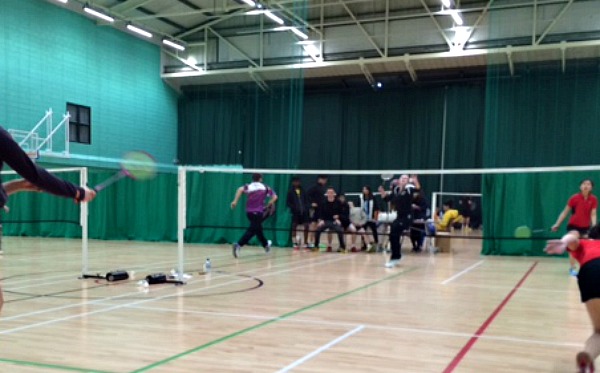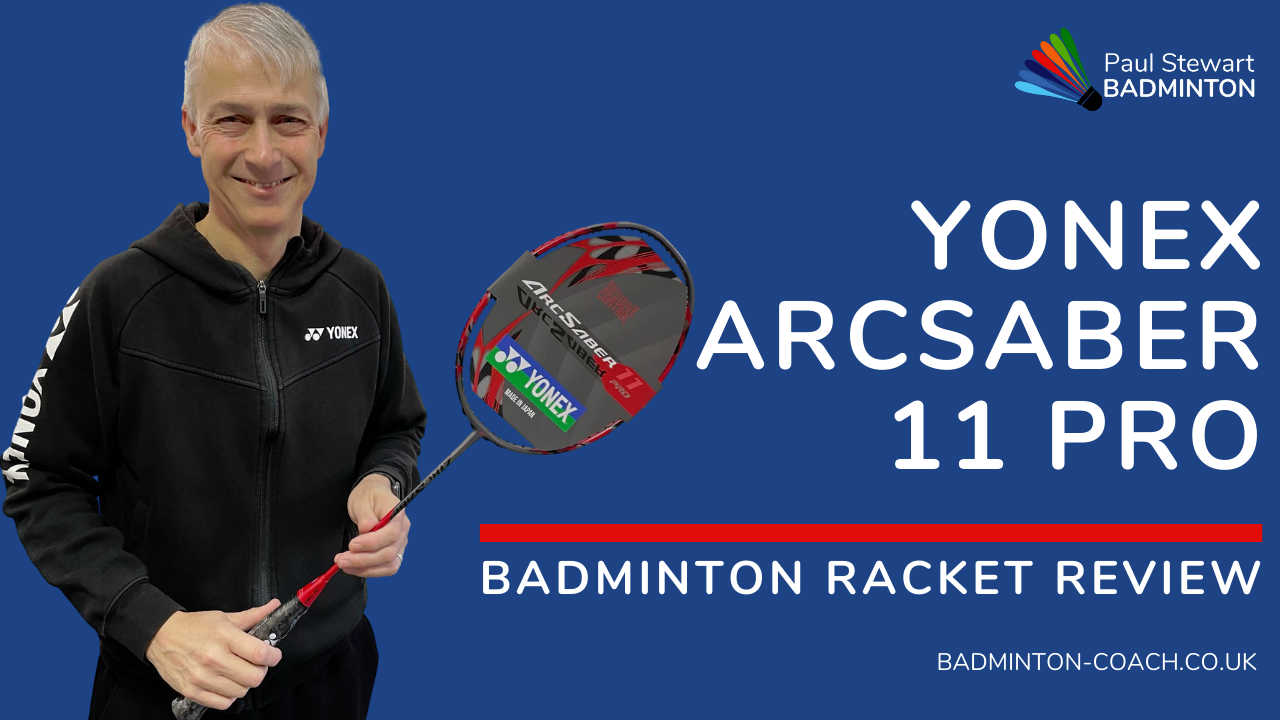I recently had the pleasure to attend a bronze senior tournament in Manchester. With so little spare time available, this was a rare treat for me.
Apparently, the entries to the tournament were over-subscribed so I was surprised and delighted to hear that one of my students had managed to gain entry in the singles, albeit due to another player withdrawing. What a thrill to sit in his corner providing me with a greater opportunity to learn more about him and how he responds to tournament conditions – priceless!
During my time at the tournament there were a number of on-court incidents that I was shocked to see. In this article I’ll report on the incident but I’ll also add my thoughts on what needs to be learned by players and officials.
Organisation Of The Badminton Tournament
My congratulations to the organisers who ran the event under difficult conditions. Pre-tournament, many if not all events were over-subscribed. A system had to be used based on ranking to determine which players were selected to compete.
The final selection was only made a week prior to the tournament date. For whatever reason, this is not ideal, especially as some players were travelling from London or Scotland and had to find accommodation in advance.
There were a few raised eyebrows from players concerning some of the players gaining entry, because they had competed in silver and gold events. There were whispers of one or two of these players reaching finals too which begs the question whether they should have been allowed to compete. The discussion here was that these players were good enough to compete at a higher level, why play this event? Secondly, there were players who did not make the draw because they did not have ranking points. How can they get points when they cannot enter tournaments? Both are good topics for discussion but should remain with the badminton authorities.
The venue opened at 10am and therefore I congratulate the organisers on the speed at which they set up and got play underway. What a shame the venue wouldn’t allow the organisers early access to set up and commence games sooner.
I’m unsure how events are run these days however, the running order was very strange e.g. 1 match on singles was played from the groups and then other events were started. Why not complete the singles groups before starting doubles?
On Court Shocking Incidents
Considering most attendees play tournaments frequently, I was amazed at the poor quality of warm ups and knock ups. In fact, from what I saw, very few players warmed up. Everybody knows the value of a good warm up routine for badminton don’t they? It was freezing conditions outside and the hall was cold so a warm up should have been even more important to protect the body from injury.
Lesson to be learned:
Make a warm up part of your preparation and design a warm up that can be done quickly as there are always occasions when you have little preparation time.
When shuttles were provided to the players, many went straight on to court for a knock up.
Lesson to be learned:
- Test the shuttle. I saw very few players test a shuttle throughout the day. The good news was that Victor Gold Champion shuttles were being used and they were a good, consistent speed. Despite this, players should get into the habit of testing every shuttle they use.
- Have a knock up routine. If you don’t have a partner to knock up with then find someone and ensure you both work out what you want. The most important reasons for a good knock up are to find your length, warm up your shots and get your timing.
The standard of play in general was very good and a delight to watch. However, there were a few incidents I witnessed…
Net play: I saw a number of players play a tight net shot and leave their racket over the net to block their opponent’s return. Unless rules have changed, this is illegal! A player has to make a shot and is not allowed to intimidate by leaving their racket to block a possible return.
Lesson to be learned:
I saw this particular incident so many times. Players, learn the rules and challenge this kind of behaviour. We don’t need this in badminton. It is cheating!
The worst incident I saw…
This happened in a mens singles. It was a really hard fought match. One of the players must have been with a squad who had traveled from a distance. Three of his team mates stood behind his side of the court and they were constantly giving him instructions. This is NOT permitted and is considered coaching on court.
The parent of the other player shouted from the balcony and next minute he was on court searching for the referee. He was angry as this had been happening for considerable time.
The referee was called and stood at the net. However, he allowed the three players standing behind the court to remain in place. They began clapping and making noises to encourage their teammate, even when the opponent made a mistake. This is poor sportsmanship and was also done to intimidate the opponent.
The player receiving the coaching won the match. He won it unfairly which is such a shame.
Lesson to be learned:
- Personally, I would have stopped the game and removed the player from the event, therefore awarding the match to his opponent. I would also have removed the player giving instructions from the tournament.
- Referees, in my opinion, should act quickly and harshly on any unfair behaviour like this.
- The three players intimidating should have been removed from the back of the court.
This wasn’t the biggest shock of the day…
Whilst this incident was pretty bad because it involved blatant cheating and poor sportsmanship, there was an even greater shock to follow which happened off court.
The venue for this event was very good except it was lacking some facilities, although I fully appreciate why. Apart from vending machines, there was nowhere to obtain food.
After walking around the courts during the day, I can honestly say that many of the players need to learn about the critical importance of good nutrition in badminton.
Some players appeared with bags from Subway, which were probably the healthiest they could find although it’s not great for tournaments. Watching the players, there was a complete lack of fruits, especially bananas to aid recovery after a match. Whilst the venue sold bottles of water, players should always have sufficient supplies. Re-hydration after a match is so important.
Drinking sports energy drinks and eating well known bars of chocolate is certainly NOT the way to fuel the body for badminton. Players need to drink a lot of water to remain hydrated, and plan their food intake to allow time for it to enter their bloodstream and get the nutrients back into their muscles. Fruits contain natural sugars which are therefore digested quickly to provide a good source of energy. Bananas are extremely good for tournament play, containing so many nutrients to prevent cramp.
What should badminton players do to prepare better after reading this?
- Download a set of rules of play and learn them. Keep the rules in your bag.
- Warm up properly to prepare your body for action. Badminton is an explosive sport and you cannot expect your body to be ready for this kind of action without good preparation.
- Cool down after each event to remove the lactic acid from your muscles. This lessons the chance of suffering later from sore muscles.
- Learn how to test shuttles
- Develop a routine for a good knock up. You have to prepare your body properly to be able to play full out from the first point.
- Be prepared with excellent nutrition and lots of water.
Poor nutrition is one of the biggest weaknesses I see in badminton. Our sport demands a huge amount from our bodies. At tournament level we are demanding our bodies to become the equivalent of a good rally or sports car. And yet, we provide the poorest fuel and oil to propel and lubricate the engine. It’s unbelievable!
Any player who plays sport frequently is creating more damage to their body through oxidative stress than they realise. If you play seriously, this level of oxidative stress increases, and only good nutrition will reduce the amount of damage you are causing.
The long term damage due to oxidative stress is far reaching creating disease in the body at cellular level, which in turn leads to the onset of considerably more serious and potentially life-threatening conditions.
Do something today to reverse the damage you are doing to your body. If you don’t know where to begin then contact me for more information.












A lot to learn from this. I must say in Belgium all tournaments are organised with tornooi.nl, and this includes you aught to follow a set of rules (exactly the same software as this famous tournament: http://www.tournamentsoftware.com/sport/tournament.aspx?id=359F5D4F-9DEC-4974-A40E-9009DEE332F8). This goes very smooth, but yes there is a license cost to use the software (but I think the tag is pretty okay). Tournaments here always start at 9:00, no exception. Organisational basically is always the same question: how do others do it ? Well, look around, and learn from it. Lately a lot of English players are participating in Belgian tournaments. At first there was an issue since not the same ranking system is used in the UK (BWF, where are you ?), but nowadays it looks like British players know in what class they have to subscribe.
Over here referees are pretty strict, a player from our club won (I guess it was) semi finals because the opposition was sent packing by the referee because he was considered too drunk to play (I kid you not). Once blatant cheating and lack of sportsmanship (in Tielt a few years back), my son was playing, cleaning his glasses while the opposition already served. About 3-4 times in a row. His mommy next to the court instructing him to serve, before my son was ready, … Anyway, my son won the match. Swift justice. After the match my son went to the referee, he knew who he was talking about (the guy had a reputation it seemed).
Concerning nutrition: same situation over here. Although I have never been to a tournament where the organisation did not have any food at all to provide. But the tournament we organize, each year we have some fruit provided (sometimes even for free, at the subscription table). But indeed never massively popular. Quality food is a general issue, not only on sport venues.
Very great article, hope this will open up some eyes in the UK, and then start working and do better.
As always, great article.
On the issue of intimidation at the net. What is it that is considered legal? I understand that a racket over the net is not allowed but if I have played a net shot and it has gone a little high, can I stand close to the net with the racket on my side to block the upcoming attacking shot (hoping I get a lucky rebound to get myself out of trouble)?
Keith
The rule is that you should be making a shot and not in fact blocking a return. In my opinion the rules need to be crystal clear and a player should not have their racket up at the net to block. As I understand, the rule is that you need to make some forward movement of your racket for this to be called a shot. Personally i think it’s bad sportsmanship. I’m fine with a racket protecting your face but to literally leave it on your side of the net to block your opponent’s reply is pretty bad in my book.
Hiya Paul,
Could you show me where the rule is that says blocking a return is a fault?
I’m looking at bwf rules here: http://www.bwfbadminton.org/file.aspx?id=608602&dl=1 and can’t see it.
This falls under rule 13.4.4 as this is obstruction. The opposing player is unable to follow through over the net and perform a legal stroke.